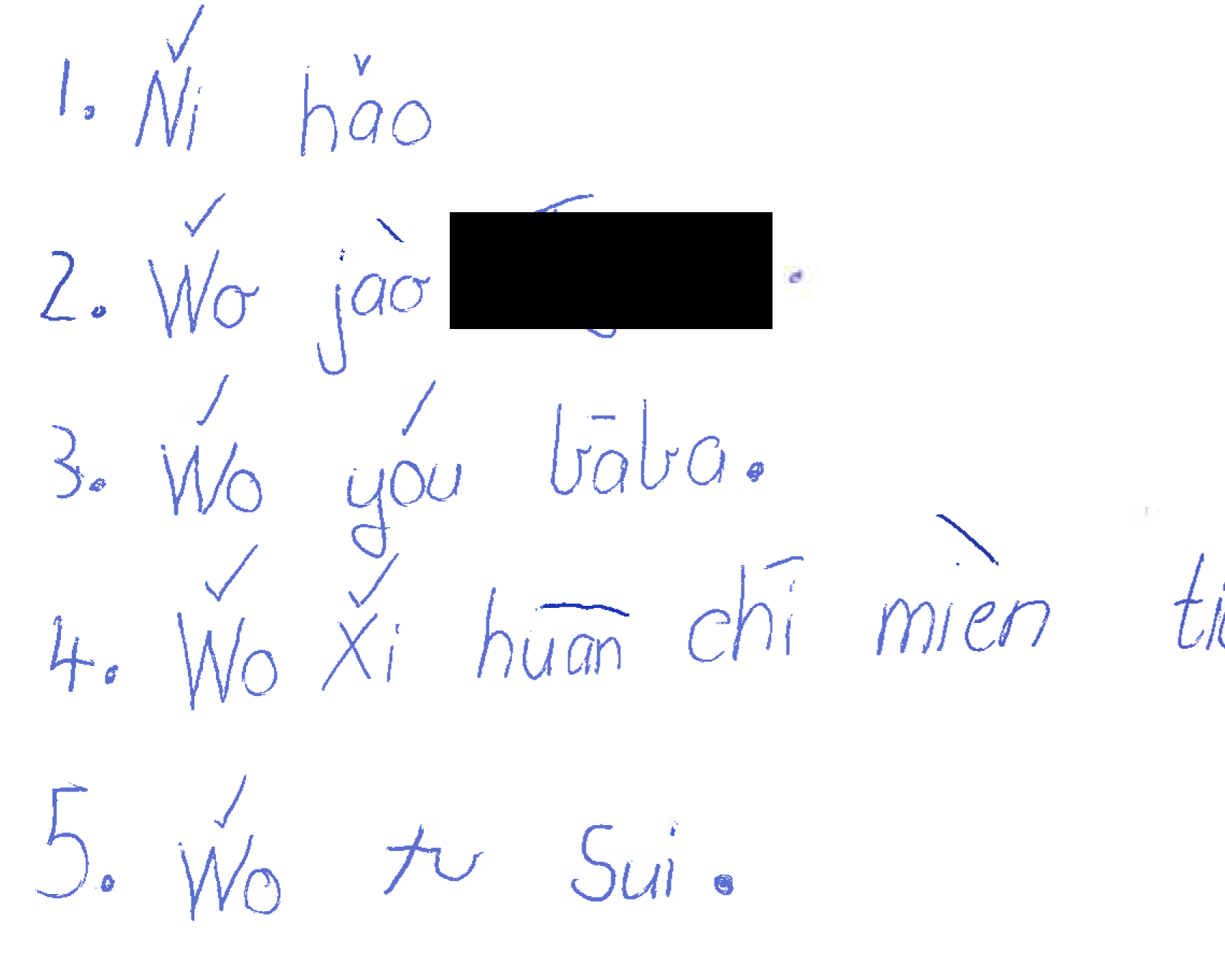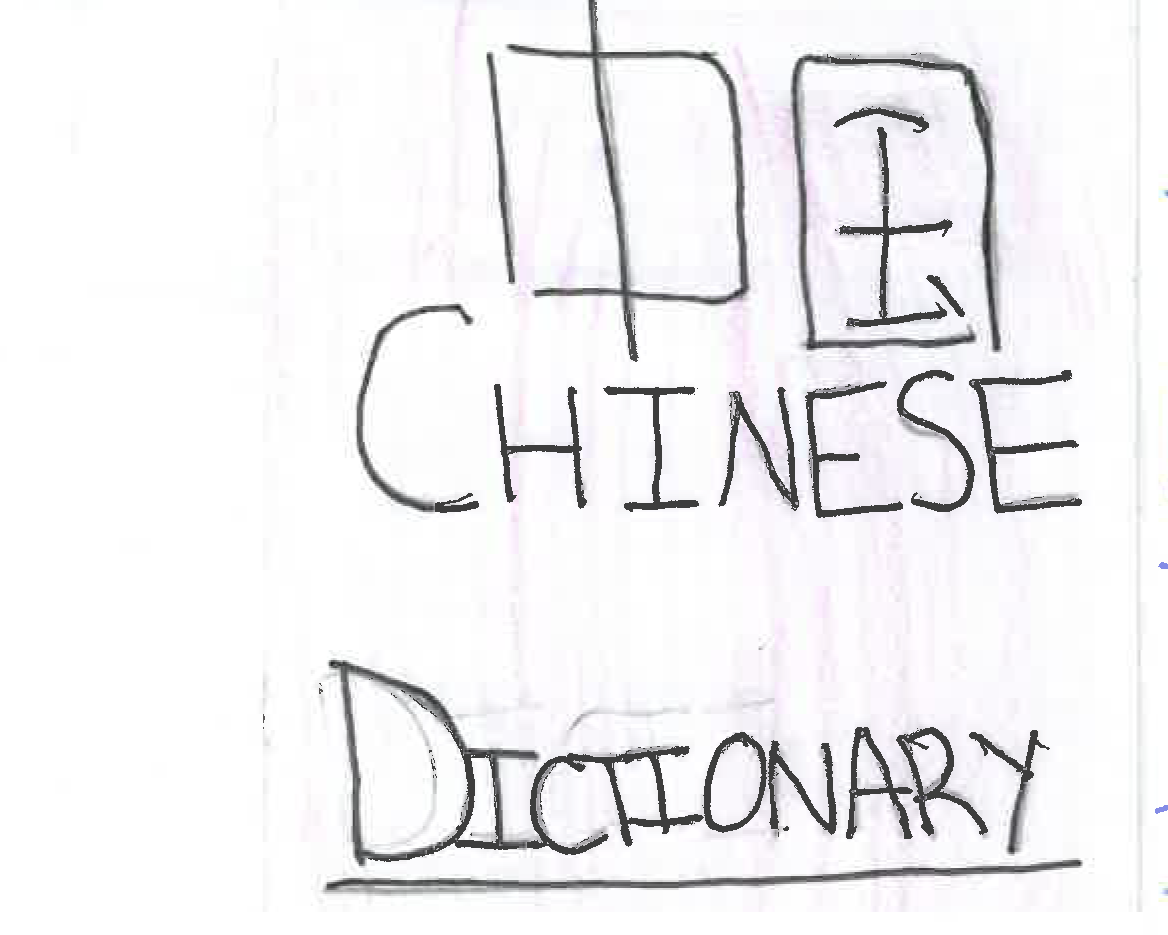Languages: Chinese - Satisfactory - Years 3 and 4
Portfolio summary
This portfolio of student work shows that the student can use spoken and written Chinese in simple personal interactions with familiar participants (WS1) about self, family (WS2), people, places, routine, school life, and own interests and preferences (WS2). The student uses appropriate pronunciation, tone (WS1), gesture and movement and some formulaic expressions (WS1, WS2). The student uses modelled questions to develop responses. The student responds to and creates simple informative and imaginative texts for familiar audiences selecting learnt words (WS2) and characters. Sentences are short and follow the basic subject–verb–object structure with occasional use of adjective predicates (WS1). The student uses familiar words in Pinyin (WS2, WS3), or presented in characters in texts. Numbers are used in relation to age (WS2) and family members, and to quantify objects with measure words.
The student explains why Chinese is a globally important language. The student understands that Pinyin provides access to the sounds of the spoken language (WS2, WS3). The student identifies features of the Chinese writing system, including the range of strokes and their sequences in character writing (WS2, WS3), and explains how component knowledge can assist in learning characters. The student is aware that each character is a meaningful unit (morpheme) that is used to make up words (WS2, WS3). The student recognises familiar word order in Chinese sentences (WS2). The student notices similarities and differences between the patterns of the Chinese language and those of English and other familiar languages. The student recognises that languages change with time and due to influences such as globalisation and technology. The student recognises that diversity of context and participants influence how meaning is communicated, and applies this knowledge to own communication. The student notices how cultural differences may affect understanding between people.


